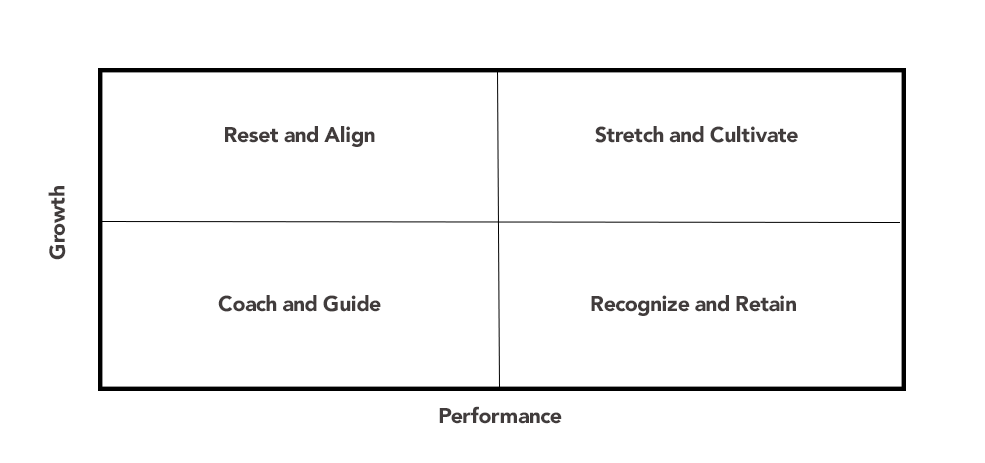How to Discuss Promotions with Employees Based on Performance & Growth Potential
Promotions are powerful motivators, however, with limited promotion opportunities available, it's important to not center career development solely around a promotion.
Last Updated: August 11, 2025
In this article:
Ready to level up employee development? Check out our Growth product tour.
Overview
Promotions are powerful motivators, however, with limited promotion opportunities available, it's important to not center career development solely around a promotion.
For the few where promotion is appropriate, discuss plans and next steps. For most employees, focus on other growth opportunities that match their career goals.
Quantum Workplace's Talent Reviews help guide these conversations by categorizing employees into four groups based on performance and growth potential, ensuring tailored development discussions for each group.

Tips for Effective Conversations
- Enter each career development conversation knowing what promotions, lateral moves, and portion of the development budget are available; this gives you something to offer when an employee desires additional opportunities, but also keeps you from over-promising
- Try to have an understanding of circumstances outside of work that may be affecting an employee's performance
- Keep an open mind- allow the employee to add their opinions and insights, and be ready to adjust your opinions if need be
Stretch and Cultivate
Employees in this group are top performers with room to grow.
- Consider employees from this group first when a promotion opportunity arises
- If promotion isn't available, identify stretch assignments or development opportunities to progress the individual's skills and abilities
Recognize and Retain
Employees in this group are well-suited for their current position, not prime for a promotion.
- Add to the employee's core skills by offering training in other areas to expand their expertise
- Test leadership abilities by having the individual lead a new initiative or act as an advocate for the team, i.e. cross-team liaison
- Promotions often introduce new responsibilities and pressure, discuss if the employee is even looking for a promotion
- Discuss opportunities to have the employee train or mentor new hires, join the interview/hiring process, and showcase their work as an example to other teams
Reset and Align
Employees in this group show signs of potential but aren't the right fit for their current position.
- Discuss job fit, what are their career aspirations, and how they align with their current path
- Uncover what's holding the employee from reaching their potential
- Encourage the employee to explore interesting career paths and what aspects of their current role excite or disengage them; consider a lateral role shift for a better long-term fit
Coach and Guide
Employees in this group are performing below expectations, and their future with the organization is uncertain.
- Identify the root cause for the employee's performance, i.e. work-life balance issues, skills, personal issues, etc.
- Create an education plan for the employee to stay with the organization
- Discuss an exit from the organization, including the reasoning and next steps; offer to help the employee in any way you can
